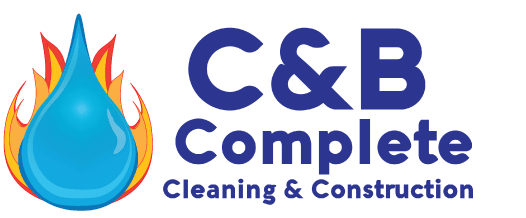When it comes to mold remediation, ensuring your safety and the safety of your loved ones is paramount. The process of mold removal can be laborious and time-consuming, and it’s important to know what to expect before, during, and after the remediation process.
One crucial aspect of the remediation process is the duration of time you should stay out of the house after the mold has been removed. This is where duration guidelines come into play.
To provide you with expert advice tailored to your health needs, we have compiled a comprehensive guide on what to expect after mold remediation. Here, you will learn about the importance of staying out of the house, how long you should stay out, and why it is crucial for your well-being.
Key Takeaways
- Staying out of the house after mold remediation is important for your health and safety.
- Duration guidelines vary based on several factors, such as humidity levels and construction materials.
- Professional assessment and post-remediation verification are required to determine when it is safe to return.
- Following safety measures during the remediation process, such as using protective equipment and monitoring air quality, can help ensure the effectiveness of the remediation process.
- Understanding the different mold removal techniques and the steps involved in professional mold removal can help you make informed decisions about mold remediation.
Understanding Mold Remediation Process
When it comes to mold removal, the mold remediation process is crucial in ensuring the safety and health of your home. A professional mold removal company will follow a strict set of guidelines that involves the following steps:
- Identification and assessment of mold contamination
- Containment and prevention of further spread of mold spores
- Source removal of mold and contaminated materials
- Cleaning and disinfecting of affected surfaces
- Drying and dehumidification of the area affected by mold growth
- Post-remediation verification and evaluation to ensure successful removal of mold and prevent reoccurrence
Mold cleanup is not a one-size-fits-all process, as different types of molds require different mold removal techniques. The most common methods used in professional mold removal include mold encapsulation, dry ice blasting, and air scrubbing.
It’s important to remember that mold removal should only be performed by trained professionals equipped with proper protective equipment. Attempting to remove mold on your own can lead to the spread of mold spores, making the problem worse and potentially causing health concerns.
| Mold Removal Techniques | Pros | Cons |
|---|---|---|
| Mold encapsulation | – Effective for non-porous surfaces – Prevents future mold growth |
– Not suitable for porous surfaces – Can trap moisture leading to further mold growth |
| Dry ice blasting | – Eco-friendly – Non-toxic – Does not damage surfaces |
– Best for small mold problems – Expensive – Requires special equipment |
| Air scrubbing | – Effectively removes mold spores from the air – Can be used in larger areas |
– Does not remove mold at its source – Requires professional equipment and expertise |
By understanding the mold remediation process and different mold removal techniques, you can make informed decisions regarding the safety and health of your home. Remember to always seek the help of a professional when dealing with mold contamination.
Safety Measures During Mold Remediation
During mold remediation, it is crucial to take proper safety measures to protect yourself and others in your home. Failure to do so can result in health issues related to exposure to mold spores and contaminated air. Therefore, it is essential to follow the guidelines provided by experts in the field.
One of the critical safety measures during mold remediation is to use appropriate protective equipment. This includes gloves, eye protection, and respirators to prevent mold spores from entering your body.
Another safety measure is to follow containment procedures to prevent mold spores from spreading to other areas of your home. This can be achieved by sealing off the contaminated area and using plastic sheeting and negative air machines to control the airflow.
Understanding the potential risks associated with mold spores is also necessary during mold remediation. Exposure to mold spores can cause various health issues such as allergic reactions, respiratory problems, and skin irritation. Therefore, it is essential to monitor air quality to ensure the effectiveness of the remediation process.
It is critical to note that different types of mold require different safety measures. Some molds produce mycotoxins, which require more stringent protective measures to prevent exposure. Consulting with a professional mold remediation company is recommended for a comprehensive assessment of the mold present in your home.
Recommended Safety Measures During Mold Remediation
| Mold Remediation Safety Measure | Explanation |
|---|---|
| Protective Equipment | Use gloves, eye protection, and respirators to prevent mold spores from entering your body. |
| Containment Procedures | Follow containment procedures to prevent mold spores from spreading to other areas of your home. |
| Monitoring Air Quality | Monitor air quality to ensure the effectiveness of the remediation process and prevent exposure to mold spores. |
| Consulting with a Professional | Consult with a professional mold remediation company to assess the mold present in your home and determine the appropriate safety measures. |
Factors Affecting Return Time
Returning home after mold remediation depends on various factors. You need to consider the following:
| Factors | Impact on Return Time |
|---|---|
| Humidity Levels | High humidity levels can cause mold growth, which can extend the time for returning home. |
| Extent of Mold Growth | If mold growth is extensive, it may take longer to remove the mold and complete the remediation process, increasing the time for returning home. |
| Type of Mold | Some types of mold are more hazardous than others, and the remediation process may take longer, affecting the return time. |
| Ventilation | Poor ventilation may increase the concentration of mold spores, necessitating longer drying periods, which in turn will delay the return time. |
| Construction Materials | Porous materials, such as drywall, are more likely to absorb moisture and mold, which can prolong the mold remediation process and delay the return time. |
By understanding these factors, you can better estimate the duration for staying out of your house after mold remediation. It is vital to ensure that your home is safe to return to, and proper precautions are taken to avoid health complications. Image source:
Recommended Time Out of the House
When it comes to returning home post-mold remediation, you want to ensure that you and your loved ones are safe from potential health risks. Professional assessment and post-remediation verification are integral in determining when it is safe to return to your home. It is important to understand that the recommended duration of staying out of the house after mold remediation can vary depending on several factors.
| Factors | Duration Recommendations |
|---|---|
| Health risks associated with mold spore levels | Minimum of 24-48 hours |
| Extent of mold growth | Minimum of 48-72 hours |
| Type of mold present | Minimum of 48-72 hours |
| Post-remediation verification for mold spores | Until verification shows mold spore levels are within normal range |
| Professional assessment | Until assessment confirms the safety of your living environment |
It is important to note that these are minimum recommendations. Depending on the severity of the mold situation and other individual factors, the duration may need to be longer.
Don’t rush the process of returning home after mold remediation. Your health and safety should always come first. Trust the expert advice tailored for your health to ensure your home environment is free from harmful mold spores.
Conclusion
Now that you have read this comprehensive guide, you have the necessary knowledge about what to expect during the time out after mold remediation. Remember that following the recommended duration and safety measures is crucial for ensuring a healthy living environment for you and your loved ones.
Make sure to take the necessary steps to understand the mold remediation process, use appropriate protective equipment, and follow containment procedures. Stay informed about the potential risks associated with mold spores and monitor your home’s air quality to ensure the effectiveness of the remediation process.
Factors such as humidity levels, extent of mold growth, type of mold present, ventilation, and construction materials can all impact the return time. Keep this in mind when making decisions regarding re-entry into your home.
By taking a professional approach and using post-remediation verification and professional assessment, you can ensure a safe and healthy living environment for you and your family. We hope this guide has helped you in your mold remediation journey. Stay safe!
FAQ
Why is it important to stay out of the house after mold remediation?
Staying out of the house after mold remediation is crucial to allow for proper ventilation and ensure that any remaining mold spores are not inhaled. It also allows time for the effectiveness of the remediation process to be verified before returning home.
How long should I stay out of the house after mold remediation?
The recommended duration for staying out of the house after mold remediation can vary depending on factors such as the extent of mold growth, type of mold, and the effectiveness of the remediation process. Generally, it is advisable to wait at least 24-48 hours, but it is best to consult with a professional for a specific assessment.
What safety measures should I take during mold remediation?
During mold remediation, it is important to wear appropriate protective equipment such as gloves, goggles, and respiratory masks. Following containment procedures, such as sealing off the affected areas, can help prevent the spread of mold spores. Monitoring air quality and ensuring proper ventilation are also crucial safety measures.
How do factors like humidity levels and construction materials affect the return time after mold remediation?
Factors like high humidity levels can prolong the drying process, while the type of construction materials used in your home can affect the absorption of moisture and the likelihood of mold growth. These factors, along with the extent of mold growth, ventilation, and the type of mold present, can impact the duration of staying out of the house after mold remediation.
Can re-entering the house too soon after mold remediation pose health risks?
Yes, re-entering the house too soon after mold remediation can pose health risks. Mold spores may still be present in the air and can cause respiratory issues, allergies, or other health problems. It is important to wait for post-remediation verification and a professional assessment to ensure that it is safe to return home.









